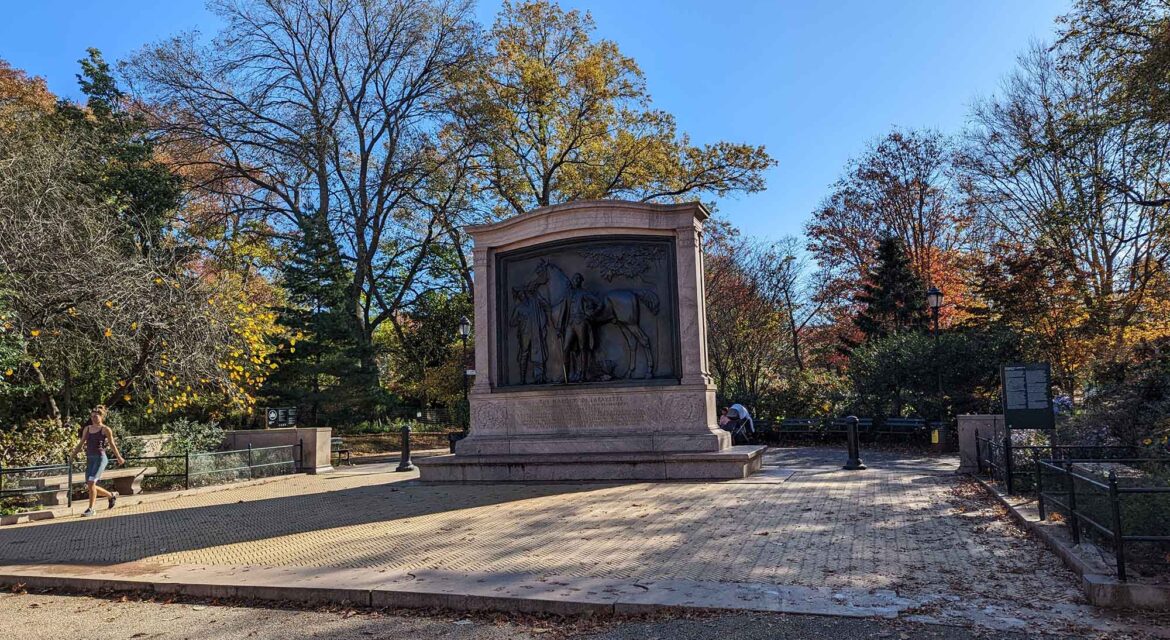 Located at the 9th Street entrance of Prospect Park in Brooklyn, the Lafayette Memorial provides the park with a notable feature that continues to enable engagement and interest. Simple but powerful, the piece highlights what it can mean for a landmark to provide a place with a sense of identity that resonates across eras.
Located at the 9th Street entrance of Prospect Park in Brooklyn, the Lafayette Memorial provides the park with a notable feature that continues to enable engagement and interest. Simple but powerful, the piece highlights what it can mean for a landmark to provide a place with a sense of identity that resonates across eras.
A Hero of the Revolutionary War
 The Marquis de La Fayette was simply known as La Fayette when he fought under George Washington in the American Revolutionary War. Widely recognized for his accomplishments in the service of the United States, he participated in some of the most decisive battles of the war. Those efforts would eventually inspire the creation of a memorial that would honor the spirit and legacy of La Fayette.
The Marquis de La Fayette was simply known as La Fayette when he fought under George Washington in the American Revolutionary War. Widely recognized for his accomplishments in the service of the United States, he participated in some of the most decisive battles of the war. Those efforts would eventually inspire the creation of a memorial that would honor the spirit and legacy of La Fayette.
Erected and presented by Brooklyn citizen Henry Harteau in 1917 as a tribute to George Washington, the Lafayette Memorial depicts Lafayette facing forward, as if watching a battle. Appearing alongside a groom and a horse, the piece was designed by sculptor Daniel Chester French and architect Henry Bacon. The relief is about 10 feet tall and 13 feet wide, but the stone structure that it resides in is much larger.
This size makes it noticeable but not intimidating, providing residents and visitors with an easy-to-identify landmark that is connected to the history of the park and of the nation, giving them multiple ways to engage with the space and the piece.

An Identity to Engage Audiences
 A popular space for residents and visitors to meet and gather, other entrances of the park have simple gates or non-descript markers. The Lafayette Memorial highlights what it can mean for an entrance to provide a unique identity that allows it to be so much more for audiences across eras.
A popular space for residents and visitors to meet and gather, other entrances of the park have simple gates or non-descript markers. The Lafayette Memorial highlights what it can mean for an entrance to provide a unique identity that allows it to be so much more for audiences across eras.


